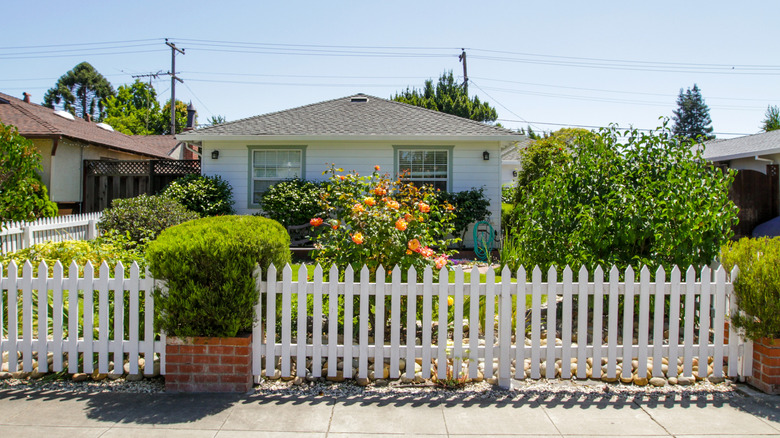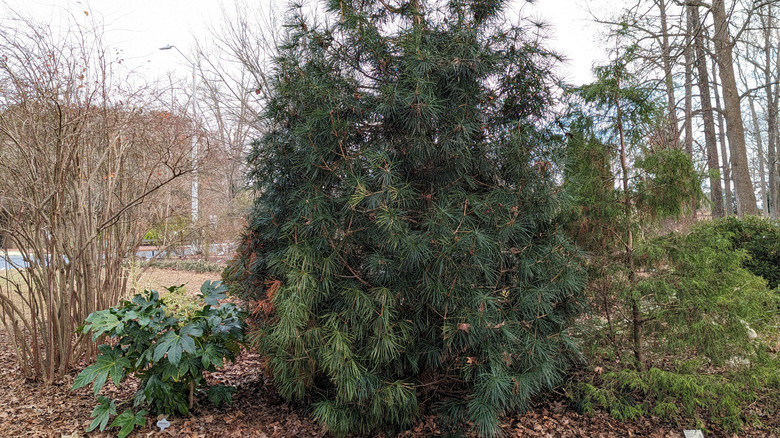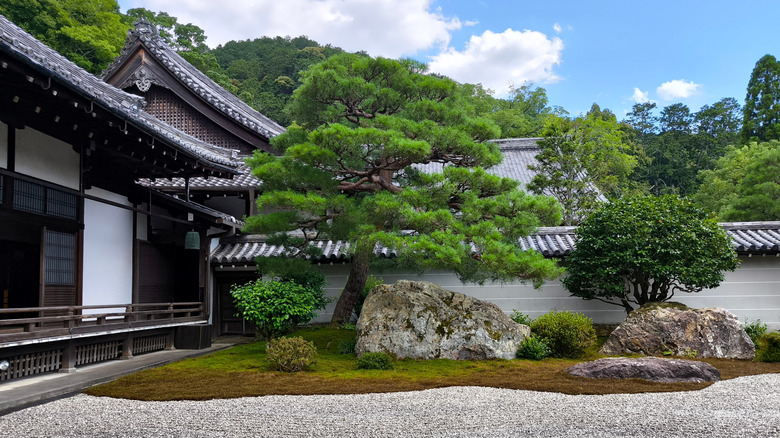Add Big Curb Appeal To Even The Smallest Of Yards With One Simple Tree
With America facing an ongoing housing crisis of an estimated 4.7 million-plus home shortage, according to the U.S. Chamber of Commerce, you'd be lucky to find a residence within your budget. Furthermore, you'd be luckier to find a place with enough yard space to accommodate your ideal gardening projects. There are ways you can make the most out of having a small backyard or front patio, but these may limit the varieties of plant life you are able to support. Some options will provide a lot of bang for your buck; for example, you can line your curb with compact trees that have visual appeal and boost your yard's privacy. That's where umbrella pines (Sciadopitys verticillata) come into play.
Umbrella pines are a slow-growing evergreen conifer with native ties to Japan, ultimately growing best in America throughout USDA Hardiness zones 5 through 8a. This means an umbrella pine will make for ideal curbside plants in much of middle America, as well as the South and Northeast. It was originally considered part of either the Pinaceae or Taxodiaceae families, but has since been given a unique family — Sciadopitaceae, based on the Greek word for "umbrella," skiados — of which it is the only member. This makes umbrella pines an incredibly unique addition to any garden, one that may take some time to grow but will be low-maintenance for your small yard space.
Preparing small yards to grow umbrella pines
The umbrella pine is considered one of the five "Sacred Trees of Kiso" alongside Japanese cypress, Sawara cypress, Hiba arborvitae, and Japanese thuja. If you're going to be growing some, it's worth giving these trees the best conditions you can. Umbrella pines like full sun conditions, but they are tolerant of both shade and drought. It's good to plant umbrella pines in moist, well-drained soil with a slightly acidic pH, reminiscent of rainy forests in central Japan. You can decrease a soil's pH level by mixing in fertilizers with elemental sulfur, or amending it with sphagnum peat moss.
You will want to make sure each umbrella pine has at least 12 feet around available to grow; umbrella pines on average will grow 15 to 20 feet wide, with pyramidal-shaped canopies that can come together to shield your home from outside eyes. There are plenty of reasons to consider planting trees over fences for privacy, not least of which being that you can trim them to any desired width. However, the tree will naturally mature with whorling branches that form an appealing shape.
Designing your tiny yard around umbrella pines
Given umbrella pines have such distinct ties to Japan, lining your curb with these evergreens also offers up a great opportunity to theme your yard after Asian rock gardens. Unique landscaping techniques can really transform your small backyard spaces, and a dry garden utilizing raked gravel, large rocks, and shrubbery is both comforting to relax in and a low-maintenance solution to having little room for extra plants. Umbrella pines also thrive in both clay-like and sandy soils, which means you won't have to worry about gravel beds interfering with their growth.
However, an umbrella pine doesn't need to be the centerpiece of your yard if you don't want to. Even if you decide to line your curb with shrubs or topiary hedges, the unique texture of umbrella pines' twirling needle leaves could help it stand out as an accent tree in your otherwise planned yard. If there's only a small amount of space to work with, it's important to be economical about what you include. Between its hundreds of millions of years of history and significance in Japanese culture, an umbrella pine is certainly worth considering as a unique way to fill your tiny space.


